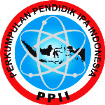Development of Puzzles for Chemical Laboratory Glassware Integrated with Islam as A Learning Medium
Abstract
The current research seeks to develop and assess the feasibility of puzzles for chemical laboratory glassware integrated with Islam as a learning medium. Conducted through research and development (R&D) method with a 4D model (Define, Design, Develop, and Disseminate), the present project was limited to the Develop stage. The chosen product was a puzzle of chemical laboratory equipment integrated with Islam as a learning medium. The puzzle was applied to 41 students of the chemistry education study program of UIN Sunan Kalijaga who joined laboratory management course. The assessment of the puzzle performance includes ten aspects with 32 indicators. The data obtained was in the form of qualitative and was subsequently tabulated and analyzed using the criteria for the ideal assessment category to determine the quality of the puzzle media. The developed media has a very-good quality according to the assessment among 41 students. The media obtained a score of 142.63 out of a maximum score of 160 and an ideal percentage of 89.15%. The findings disclosed that the developed media is suitable for use as a supporting learning resource for students to understand chemical glassware.
Keywords: puzzle learning media; laboratory tools; integration of science and IslamFull Text:
PDFReferences
Abdullah, M. A. (2003). Menyatukan kembali ilmu-ilmu agama dan umum: upaya mempertemukan epistemologi Islam dan umum. Yogykarta: Suka Press.
Adane, L., & Abeje, A. (2012). Assessment of Familiarity and Understanding of Chemical Hazard Warning Signs among University Students Majoring Chemistry and Biology: A Case Study at Jimma University, Southwestern Ethiopia. World Applied Sciences Journal, 16(2), 290-299.
Amin, S. (2020). Perancangan Aplikasi Pengenalan Alat-Alat Praktik Laboratorium Kimia Berbasis Augmented Reality. Syntax Literate: Jurnal Ilmiah Indonesia, 5(8), 681-694.
Andriani, R. (2016). Pengenalan Alat-Alat Laboratorium Mikrobiologi untuk Mengatasi Keselamatan Kerja dan Keberhasilan Praktikum. Jurnal Mikrobiologi, 1(1).
Arsyad, A. (2002). Media Pembelajaran. Jakarta: Raja Grafindo Persada.
Bretz, S. L. (2019). Evidence for the Importance of Laboratory Courses. Journal of Chemical Education, 96(2), 193-195.
Hadi, K., Sofyanita, S., & Ardiansyah, A. (2021). Hidrokarbon dan Minyak Bumi dalam Prespektif Al Quran. Journal of Natural Science and Integration, 4(2), 244-252.
Högström, P., Ottander, C., & Benckert, S. (2010). Lab Work and Learning in Secondary School Chemistry: The Importance of Teacher and Student Interaction. Research in Science Education, 40(4), 505–523.
Inayah, N. M., Masruroh. (2021). PhET Simulation Effectiveness as Laboratory Practices Learning Media to Improve Students’ Concept Understanding. Prisma Sains: Jurnal Pengkajian Ilmu dan Pembelajaran Matematika dan IPA IKIP Mataram, 9(2), 152-162.
Irwansyah, F. S., Yusuf, Y. M., Farida, I., & Ramdhani, M. A. (2018). Augmented Reality (AR) Technology on the Android Operating System in Chemistry Learning. IOP Conference Series: Materials Science and Engineering, 288(1), 012068.
Januszewski, A. (2001). Educational Technology: The Development of a Concept. California Libraries Unlimited.
Marcella, Z., Susanti, N., & Dani, R. (2018). Analisis Hambatan Pelaksanaan Praktikum IPA Terpadu di Dua SMP Negeri Kota Jambi. Edufisika: Jurnal Pendidikan Fisika, 3(2), 41-48.
Muslikhah, U., & Rahmasari, L. (2016). Befizel, Learning Physics by Using Puzzle as Learning Media Innovation. Prosiding ICTTE FKIP UNS 2015, 1(1), 593-595.
Rahadi, A. (2004). Media Pembelajaran. Jakarta: Departemen Pendidikan Nasional.
Rahayu, M. K. P. (2019). Barriers to Use E-learning Platform in Indonesia Higher Education: Factors Related to People and Organization. International Conference on Organizational Innovation, 475-479.
Rahmantiyoko, A., Sunarmi, S., Kurnia Rahmah, F., Sopet, S., & Slamet, S. (2019). Keselamatan dan Keamanan Kerja Laboratorium. PTEK Journal of Proceedings Series, 4, 36-38.
Rakhman, K. A., Saraha, A. R., & Sugrah, N. (2017). Pengembangan Video Penggunaan Alat Gelas Laboratorium Kimia di Universitas. Jurnal Inovasi Pendidikan IPA, 3(2), 161-171.
Rosa, N. M. (2012). Pengaruh Sikap pada Mata Pelajaran Kimia dan Konsep Diri terhadap Prestasi Belajar Kimia. Formatif: Jurnal Ilmiah Pendidikan MIPA, 2(3), 218-226.
Sanjaya, W. (2006). Strategi Pembelajaran Berorientasi Standar Proses Pendidikan. Jakarta: Kencana.
Setyosari, P. (2010). Metode Penelitian dan Pengembangan. Jakarta: Kencana.
Sugiyono, S. (2010). Metode Penelitian Kuantitatif dan Kualitatif dan R&D. Bandung: Alfabeta.
Teo, T. W., Tan, K. C. D., Yan, Y. K., Teo, Y. C., & Yeo, L. W. (2014). How Flip Teaching Supports Undergraduate Chemistry Laboratory Learning. Chemistry Education Research and Practice, 15(4), 550-567.
Ural, E. (2016). The Effect of Guided-Inquiry Laboratory Experiments on Science Education Students Chemistry Laboratory Attitudes, Anxiety and Achievement. Journal of Education and Training Studies, 4(4), 217-227.
Walters, A. U. C., Lawrence, W., & Jalsa, N. K. (2017). Chemical Laboratory Safety Awareness, Attitudes and Practices of Tertiary Students. Safety Science, 96, 161-171.
Wangsa, W., & Prastyo, P. (2019). Implementasi Quick Response (QR) Code pada Dokumen Instruksi Kerja Alat Laboratorium Kimia. Jurnal Pengelolaan Laboratorium Pendidikan, 1(2).
Wardhana, W. A. (2004). Al Qur`an dan Energi Nuklir. Yogyakarta: Pustaka Pelajar.
Wardhana, W. A. (2005). Melacak Teori Einstein dalam Al-Qur`an. Yogyakarta: Pustaka Pelajar.
White, R. T. (1996). The Link between the Laboratory and Learning. International Journal of Science Education, 18(7), 761-774.
Winda, M., Muharini, R., & Rasmawan, R. (2020). Pengembangan Ensiklopedia Peralatan Laboratorium Kimia. Jurnal Pendidikan dan Pembelajaran Khatulistiwa, 9(4), 1-8.
Yaacob, N. R. N. (2013). Cognitive Therapy Approach from Islamic Psycho-spiritual Conception. Procedia - Social and Behavioral Sciences, 97, 182-187.
Zamhari, M., & Setiawati, E. M. (2017). Developing Puzzles Laboratory Safety Symbols for Laboratory Introduction. Paper presented at the International Conference on Science and Engineering1, 219-223.
DOI: http://dx.doi.org/10.24014/jnsi.v5i1.16896
Refbacks
- There are currently no refbacks.

Journal of Natural Science and Integration
E-ISSN: 2620-5092 P-ISSN: 2620-4967
Published By:
Department of Science Education, Faculty of Education and Teacher Training,
State Islamic University of Sultan Syarif Kasim Riau, Indonesia
Mailing Address:
Jl. H.R Soebrantas Km. 15 No. 155
Kelurahan Simpang Baru
Kecamatan Tuah Madani, Pekanbaru, Riau, Indonesia
Email: jnsi.tadrisipa@uin-suska.ac.id
Indexed By:
Journal of Natural Science and Integration is licensed under a Creative Commons Attribution 4.0 International License.


_-_Copyy2.png)






.jpg)
.png)
.jpg)
.jpg)




